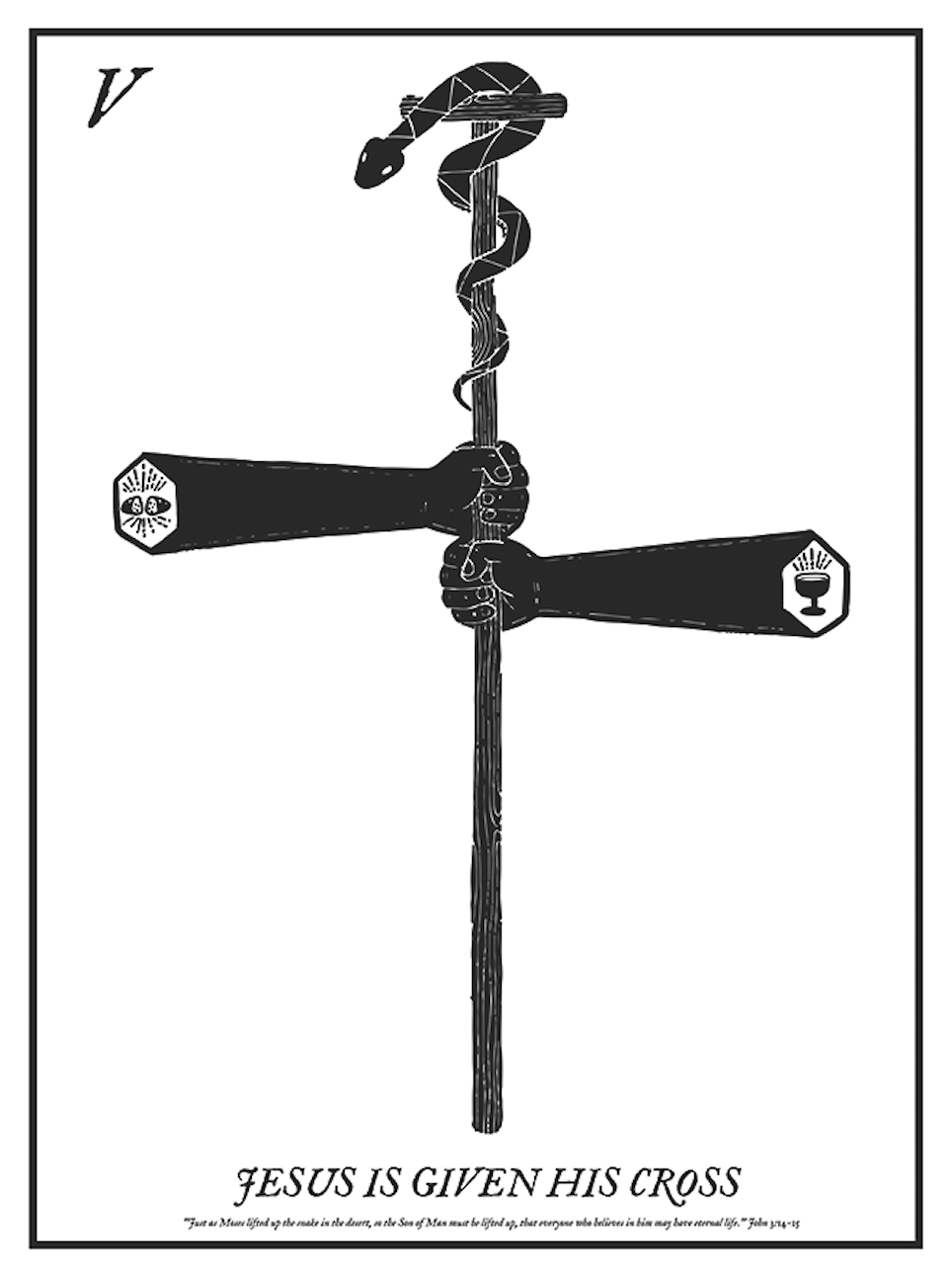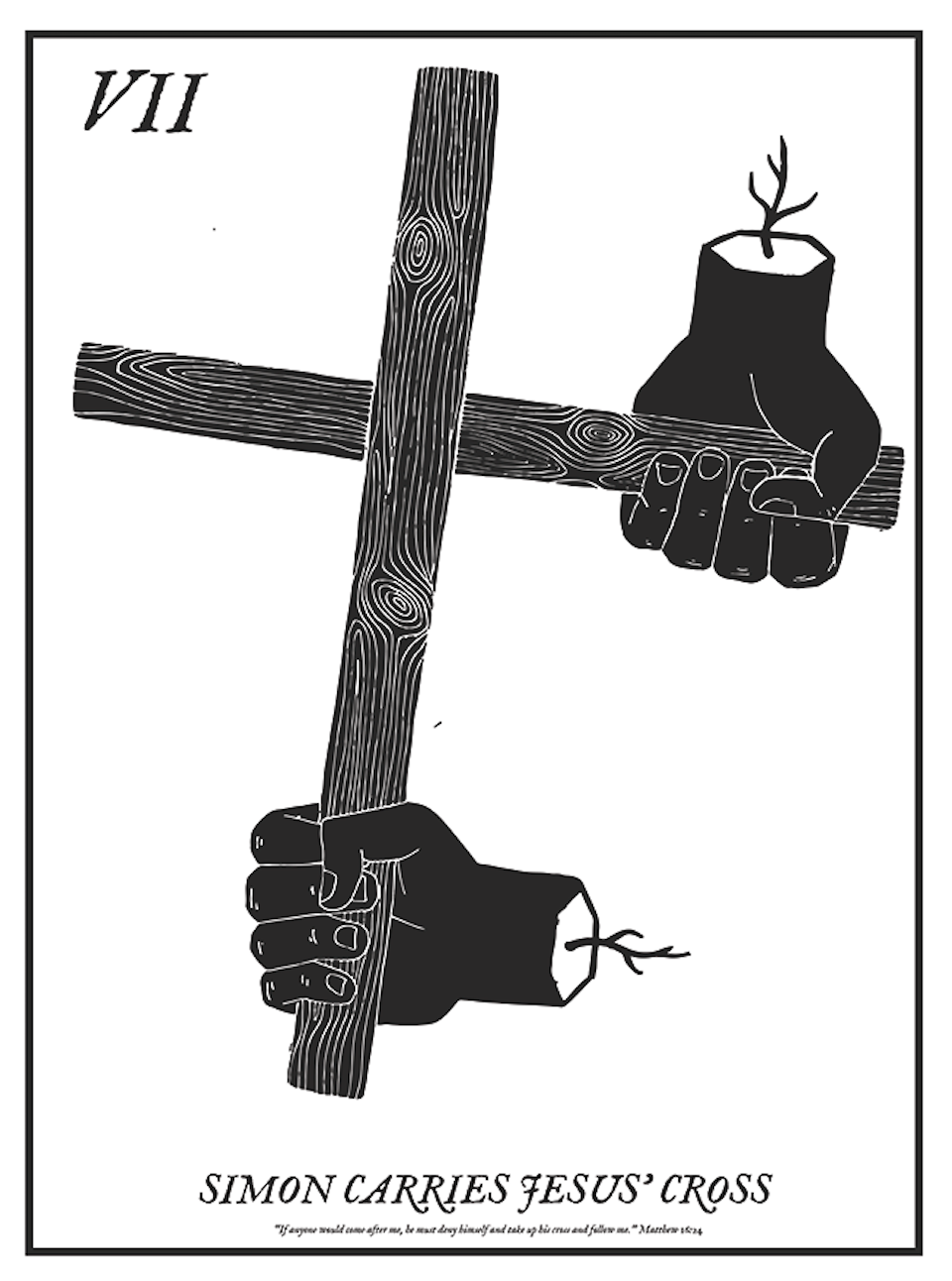Scott Erickson


Eleven: You’ve said that what interests you the most about visual art is the story that unfolds in the creative process. Can you give us a story that sticks out to you out of a project that you’ve done?
Scott Erickson: For the last 12 years I’ve put myself in front of people making things, people call it live painting. Creating something while an audience watches isn’t expected out of visual artists. For example, if you are going to make music you eventually might think to perform those songs in front of some people, and if you make visual art you might complete some work and think about maybe hanging some of it up for people to see but you never think that you might create it in front of people, but I have always been drawn to that concept. I was invited in college to work with a band called Late Tuesday up in Bellingham, Wash., where I went to college, to perform art during their performances. My love for live art making really started with that, and we did lots of performances that way, some in some really amazing venues.
11: What is important to you about being an artist?
SE: A couple years ago I really took a step back and contemplated why I was an artist, what I was trying to accomplish. It was the moments of solidarity with an audience and creating those moments of connection with an audience. I realized doing art shows was not for me and I’m not interested in that, every art show I’ve ever done was kind of an emotional let-down. This is in contrast to performing, which I’ve found is so much more gratifying for me and I’ve been able to meet my end goal so much more.
If I have an idea for something, then I will probably make visual art for it because that is the way that I think. I think I really want to be a musician but I just don’t think musically. I am bombarded with images constantly so I think more about how I can use image and story and performance to get to my end goal or the thing I want to get to. Which, to sum it up, is like this representation of something that I make that helps people to connect and remember they are not alone and somebody else feels this way or finding that essence of what connects us. I guess I am just like one of those people at the fair making those spray paint universes, on the street, like stars and planets, and when their stuff is just sitting out everyone is just walking by, but as soon as they start to get it out and lay it out, *poof*, a giant crowd appears and they want to see it being done. Most people have not seen art being made, it’s a mystery to them. Maybe they don’t know what it is but it may trigger something in them and they might start having a conversation and there may be this moment of revelation that I am not in charge of but I get to be a part of which feels really magical.

11: It seems a lot of artists can be very personal in their art, so why do you feel it is important to draw at these interpersonal connections?
SE: I think you make the artwork that you really long to see. I remember I went to Philadelphia and went to the National Gallery there and my wife and I paid like $30 dollars each and it was awesome to see super famous works like Marcel Duchamp’s Descending Staircase. Still after like three hours of walking around and seeing stuff, I just remember thinking it still wasn’t as awesome as a rock show. I think it would have been so much more interesting for me if the artists were there and could talk about their works and we could understand their intentions.
11: Why is it important to you to make art that is ‘tangible’?
SE: I never felt a part of the art world. I studied art and became an art teacher and taught art to high schoolers. Part of the reason I had to quit that job was that I felt like I was teaching what I was told to teach and not what I know about being an artist. I am mostly self-taught. I think art at its most powerful is very teaching and reflects something about the experience of being human in this world.
11: Tell us about your Artist in Church Residency in Houston.
SE: I was hired by a church to be their resident artist. The lead pastor of that church trusted me to figure out what I want to do. I spent three years in that community and I was there to help foster a visual language that we could use to anchor our beliefs in imagery. I did a number of different projects and it was a very pleasant experience. I didn’t want to be a typical arts pastor and I wasn’t interested in just having coffee with people and putting on events, but wanted to be creating with them. I don’t want an office; I want an art studio. I think it is important to have a community that is making something rather than talking about what they should make.
The biggest project that we did was called “Cruciformity, Stations on the Skin,” that got national coverage on CNN was one we did during the season of Lent. Lent is the Catholic tradition that is a 40 days of time before Easter dedicated to meditating on Jesus’s journey in Jerusalem and his march to the cross, and a season to contemplate our own mortality. Half of our church was an art gallery that I helped curate, and we usually have the Stations of the Cross up, and so my idea was to do the stations on skin, like tattoos. I found out about the history of Russian prison tattoos where people would get symbols as representations of the crimes that they committed. So off of that idea I thought of doing tattoos that represented grace rather than crimes. I made several designs and proposed them to my church and suggested that rather than having images up for Ash Wednesday at the art opening we would have people as the Stations of the Cross. I needed just 10 people, but by the end of that Sunday 160 people showed interest and 60 people actually participated. It was a very meaningful experience.

11: What is the Stations of the Street project that you did this year?
SE: I thought it was important to take this powerful meditation during Lent and allow people to be able to participate in it without having to physically go into the church. I accomplished this by making it into a street art piece. The original Catholic story includes 14 stations and I whittled it down to 10 stations. The reason that I am interested in the Stations of the Cross is that Easter is about the power of the divine over death and I think Good Friday is like the divine participating in how shitty it is to be a human being. Jesus is willfully going through awful parts of humanity, like being tried in an unjust system, being physically abused, publicly humiliated, anxiety and terror and those types of human experiences. For me the Stations are a meditation on what it is to be human, and a spiritual meditation. I believe that if there is a place that our spirituality should come from, it should be rooted in a place that the divine is not outside of our own experience.
11: What are some of your latest projects?
SE: The next little project I’m working on is a series of t-shirt illustrations highlighting the lament of an ever-changing Portland. I’m playing off of RIP CITY – R.I.P. City. I grew up in Seattle and I saw how a city can change for better and for worse. It’s not fun to lose the things you used to know and love, but that’s how life is. “This too shall pass,” says the Buddha and the old Portland will be just that, old. There are so many amazing things in Portland and those have come about by growth and ingenuity. Sure we will have more traffic and high rent prices and that sucks. But I’m thankful I call this city my home. It’s my favorite place in the world. I just wanted to make something that had a humorous solidarity with it as I’m forced to grow up in a growing city.»
– Lucia Ondruskova



